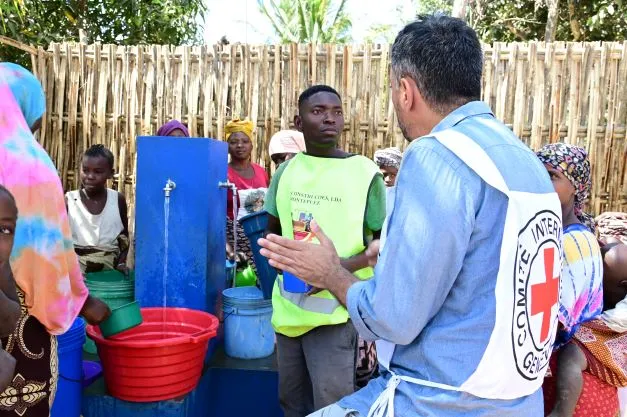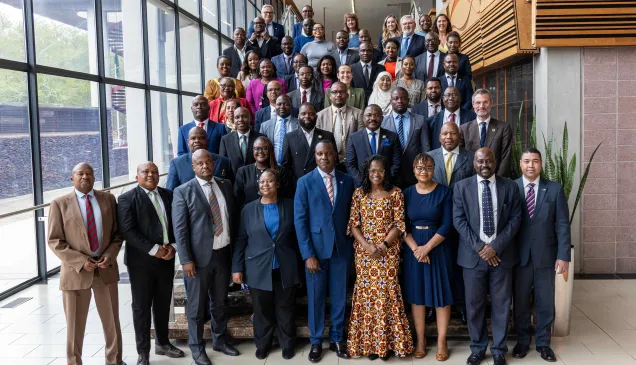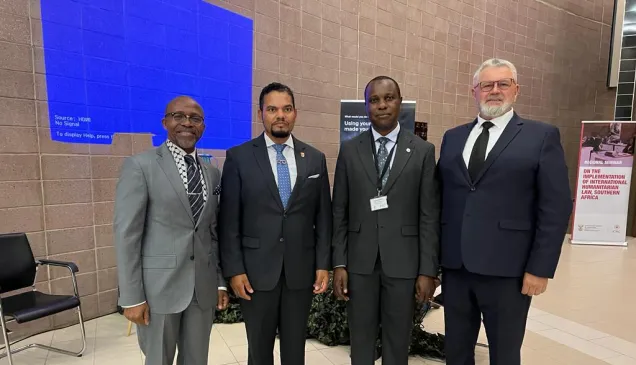Mozambique: How does armed conflict in Cabo Delgado affect access to basic services like water, sanitation and health?

Thousands of people fled the northern districts of Cabo Delgado, in Mozambique, and they came looking for safety and livelihoods opportunities in areas such as where attacks have taken place since the beginning of the conflict since the beginning of the conflict. This additional population presents enormous pressure on the district’s basic services, particularly access to water and healthcare, which were already precarious before the conflict.
What is the impact of the ICRC project to improve access to water for communities affected by the violence in Cabo Delgado? How has these projects involved the health system?
The ICRC works to develop urban water sources to extend and ensure centralized and sustainable access, and to prevent people from relying on unsafe sources. This improvement of access to water is fundamental to improve public health conditions and to protect people from water borne diseases endemic in Cabo Delgado.
How has climate change influenced the precariousness of essential services in an already vulnerable area?
In addition to presenting a significant risk to people's health, traditional wells and unprotected surface water sources tend to dry up during droughts, and to be vehicles of illness such as cholera during the rainy season due the absence of urban sanitation. Climate change predictions in Mozambique indicate an increase in the duration of dry seasons, as well as periods of heavy rains. The only safe water supply in the urban context is a centralized system with sufficient and properly treated water from the source to the consumer.
ICRC works in partnership with FIPAG, the public institution responsible for urban water supply which operates the system in Montepuez, in the design of necessary infrastructure to reinforce and extend urban supply. ICRC also collaborates to build capacity of staff at FIPAG, to guarantee the monitoring and management of the system as well as the correct operation and maintenance of infrastructure.

Water supply system built by ICRC
In order to minimize the humanitarian consequences of the conflict in Cabo Delgado, what sustainable programs have you implemented for affected communities?
In addition to preventing diseases and improving living conditions of people through the Montepuez urban water supply system, the ICRC has also worked on creating autonomous water distribution systems in zones with displaced people around the city. In parallel, the ICRC contributed to the strengthening of the primary health system with the expansion and rehabilitation of 4 health centres and support for health care services in these centres as well as in the city hospital. These health centres assist 195,000 people, including 25,000 displaced people.
To what extent do the movements of affected people in search of new shelter or returns to places of origin make the ICRC's work more challenging in the areas of access to water and health services?
Displaced people find refuge in areas that often lack essential services, due to a chronic lack of investment and systemic and institutional weaknesses. The sudden increase in demand creates huge public health challenges, conflicts between resident and displaced populations, and causes systems to collapse.
What is the impact of the Montepuez urban distribution system today and in the future?
Before the ICRC project, in partnership with FIPAG, the Montepuez urban system provided water to only 8% of the population, with frequent cuts and no guarantee of quality and sustainability. Populations consequently depended on alternative water sources, without guarantees of cleanliness and vulnerable to climatic conditions.
Through its partnership with FIPAG, the ICRC is creating modern infrastructure that will provide a safe, sustainable, high-quality, affordable water supply for the population of Montepuez, particularly the most vulnerable populations. The first phase of the project made it possible to reach 15,000 people in 2022, which will increase to 40,000 people in 2023, through infrastructure designed following a master plan and scaled to allow the supply of the entire city.

ICRC works in partnership with FIPAG, the public institution in charge of urban water supply that operates the Montepuez system



